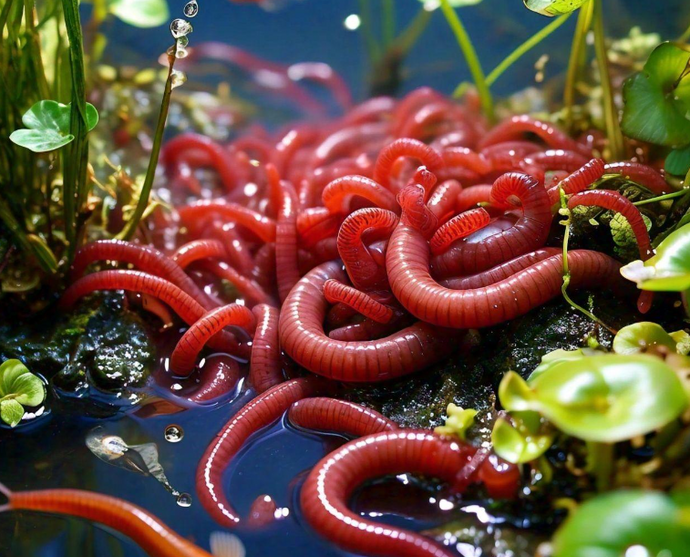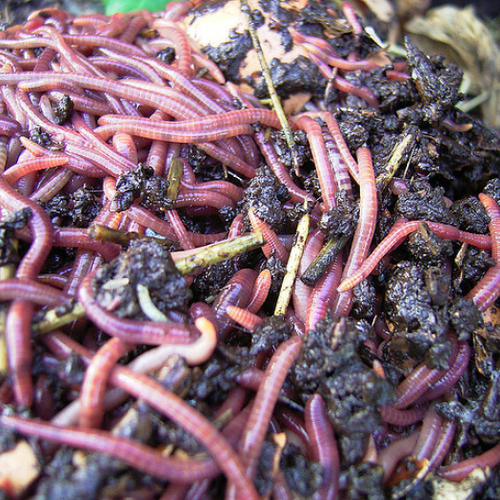Making Use Of Red Wigglers for Effective Organic Waste Disposal
Using red wigglers for organic waste disposal offers a compelling strategy to handling food scraps while promoting ecological sustainability. These worms not only boost waste decay but additionally generate important worm castings, which can considerably boost dirt health. Their capacity to refine big volumes of natural product with minimal effort positions them as an accessible option for homes and communities alike. Comprehending the nuances of establishing up an effective worm container and maintaining an optimal habitat is crucial for maximizing their advantages. The next steps in this procedure may shock you.
Benefits of Utilizing Red Wigglers
Among one of the most compelling advantages of utilizing red wigglers for natural garbage disposal is their impressive efficiency in composting. These worms, clinically called Eisenia fetida, are specifically adapted for breaking down organic materials, enabling them to process waste approximately two times their body weight each day. This fast disintegration not just increases the composting procedure yet also generates nutrient-rich worm spreadings that significantly enhance soil quality.
Additionally, red wigglers contribute to a decrease in land fill waste. By drawing away organic materials from landfills, they help minimize methane emissions-- a potent greenhouse gas. This eco-friendly advantage is critical in the battle versus climate change.
Moreover, red wigglers are low-maintenance and can thrive in numerous settings, making them obtainable for both amateur and knowledgeable composters. Their capability to replicate rapidly guarantees a steady populace, assisting in continuous waste processing.
Establishing Your Worm Container
Developing an efficient worm bin is important for making the most of the advantages of composting with red wigglers. Guarantee the container has sufficient water drainage holes to protect against excess wetness, as red wigglers grow in a moist yet not soggy setting.
(red wiggler composting worms)Next, prepare the bedding product, which offers as the worms' environment and food resource. The bin ought to be placed in a dark, temperature-controlled location, preferably in between 55 ° F and 77 ° F, to keep worm task.
As soon as the container is set up, present the red wigglers, allowing them to accommodate to their new environment. A well-kept bin will certainly not only sustain the health of the worms yet likewise facilitate effective decomposition of natural waste.
(red wiggler composting worms)
What to Feed Red Wigglers
An understanding of the appropriate diet for red wigglers is essential for keeping a healthy and balanced worm population and enhancing composting efficiency. These items not just give necessary nutrients however likewise contribute to the wetness balance within the worm bin.
It is crucial to stay clear of specific foods that can hurt the worm population. Red wigglers need to not be fed meat, dairy products, oily foods, or refined products, as these can attract pests and develop undesirable odors. red wigglers. In addition, citrus fruits and hot foods ought to be minimized, as their level read this of acidity can be damaging to worms
Keeping an eye on the worm bin for food consumption rates will assist make sure that red wigglers are obtaining an adequate diet plan while preserving an efficient composting setting. Correct feeding methods are essential for promoting a growing community within the worm bin.
Keeping Your Worm Environment
A well-maintained worm habitat is important for the health and productivity of red wigglers. To ensure optimal conditions, it is crucial to monitor temperature, moisture, and oygenation within the worm container (red wigglers).
A great guideline of thumb is to preserve wetness at roughly 70% to 80%. If the bedding comes to be too wet, it can lead to anaerobic problems that are unsafe to the worms.

Using Worm Castings in Gardening
Rich in nutrients and useful microbes, worm spreadings offer as a remarkable organic plant food for horticulture. Generated via the digestive system procedures of red wigglers, these spreadings contain a range of vital nutrients, consisting of nitrogen, phosphorus, and potassium, which advertise durable plant development. Unlike artificial plant foods, worm castings offer a slow-release mechanism, making sure that nutrients are readily available to plants over an extensive period, consequently reducing the risk of nutrient leaching and soil exhaustion.
In enhancement to nutrition content, worm spreadings boost dirt structure and aeration, boosting dampness retention and drain. The microbial life present in worm spreadings aids to suppress virus and promotes a healthy and balanced soil ecosystem, more benefiting plant health. When integrated into the dirt or used as a leading dressing, worm spreadings can significantly enhance seed germination rates, origin advancement, and total plant vitality.
For optimal results, gardeners must apply worm spreadings at a rate of 1-2 inches per square foot, blending them right into the soil or including them into potting blends. Generally, using worm castings is an eco-friendly technique to enriching dirt fertility and ensuring prospering garden atmospheres.
Verdict
